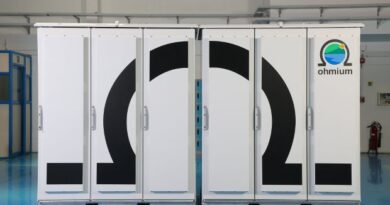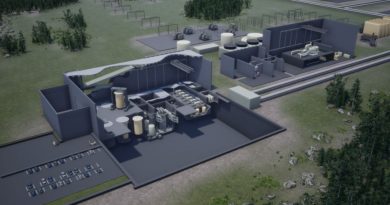Thermal Energy Storage Could Play Major Role in Decarbonizing Buildings, Say Scientists Working at Berkley Lab, California

Could a tank of ice or hot water be a battery? Yes, if a battery is a device for storing energy, then storing hot or cold water to power a building’s heating or air-conditioning system is a different type of energy storage.
Known as thermal energy storage, the technology has been around for a long time but has often been overlooked. Now scientists at Lawrence Berkeley National Laboratory (Berkeley Lab) are making a concerted push to take thermal energy storage to the next level.
To overcome some of the limitations of traditional water-based thermal energy storage, Berkeley Lab scientists are looking at developing next-generation materials and systems to be used as a heating or cooling medium. They are also creating a framework to analyze costs as well as a tool to compare cost savings. In a series of papers published this year, Berkeley Lab researchers have reported important advances in each of these areas.
“It is very challenging to decarbonize buildings, particularly for heating,” said Ravi Prasher, Berkeley Lab’s Associate Lab Director for Energy Technologies. “But if you store energy in the form of the end use, which is heat, rather than in the form of the energy supply, which is electricity, the cost savings could be very compelling. And now with the framework we’ve developed, we’ll be able to weigh the costs of thermal energy storage versus electrical storage, such as with lithium batteries, which has been impossible until now.”
In the United States, buildings account for 40% of total energy consumption. Of that, almost half goes toward thermal loads, which includes space heating and cooling as well as water heating and refrigeration. In other words, one-fifth of all energy produced goes towards thermal loads in buildings. And by 2050, the demand on the electricity grid from thermal loads is expected to increase dramatically as natural gas is phased out and heating is increasingly powered by electricity.
“If we use thermal energy storage, in which the raw materials are more abundant to meet the demand for thermal loads, this will relax some of the demand for electrochemical storage and free up batteries to be used where thermal energy storage cannot be used,” said Sumanjeet Kaur, lead of Berkeley Lab’s Thermal Energy Group.
Viable, cost-effective alternative to Li-ion batteries
“Lithium batteries face tremendous pressure now in terms of raw material supply,” Prasher said. “We believe thermal energy storage can be a viable, sustainable, and cost-effective alternative to other forms of energy storage.”
Thermal energy storage can be deployed at a range of scales, including in individual buildings – such as in your home, office, or factory – or at the district or regional level. While the most common form of thermal energy uses large tanks of hot or cold water, there are other types of so-called sensible heat storage, such as using sand or rocks to store thermal energy. However, these approaches require large amounts of space, which limit their suitability for residences.
From liquid to solid and back again
To get around this constraint, scientists have developed high-tech materials to store thermal energy. For example, phase-change materials absorb and release energy when transitioning between phases, such as from liquid to solid and back.
Phase-change materials have a number of potential applications, including thermal management of batteries (to prevent them from getting too hot or too cold), advanced textiles (think of clothing that can automatically keep you warm or cool, thus achieving thermal comfort while reducing building energy consumption), and dry cooling of power plants (to conserve water)
Advancing the fundamental science of phase-change materials
A Berkeley Lab study earlier this year addressed the problem of supercooling, which is super not cool in certain phase-change materials because it makes the material unpredictable, in that it may not change phase at the same temperature every time. The study was the first to demonstrate a methodology to quantitatively predict the supercooling performance of a material.
Another Berkeley Lab study describes a way to develop atomic- and molecular-scale understanding of phase-change, which is critical for the design of new phase-change materials.
Apples to apples
Another study develops a framework that will allow direct cost comparisons between batteries and thermal energy storage, which had not been possible until now.
The framework, which was developed with researchers at the National Renewable Energy Laboratory and Oak Ridge National Laboratory, takes into account lifetime costs. For example, thermal systems have lower capital costs to install, and the lifetime of thermal systems is typically 15 to 20 years, whereas batteries typically have to be replaced after eight years.
Simulation tool for deploying thermal energy storage in building HVAC systems
Finally, a study with researchers from UC Davis and UC Berkeley demonstrated the techno-economic feasibility of deploying HVAC systems with thermal energy storage based on phase-change materials. The team developed simulation models and tools needed to assess the energy cost savings, peak load reduction, and cost of such a system. The tool, which will be available to the public, will allow researchers and builders to compare system economics of HVAC systems with thermal energy storage to all-electric HVAC systems with and without electrochemical storage.




